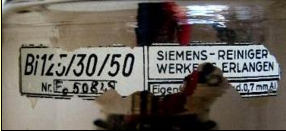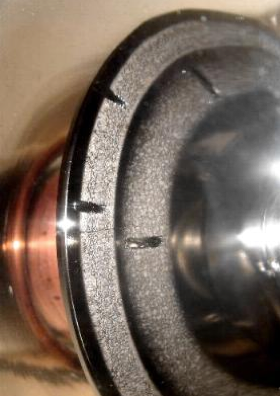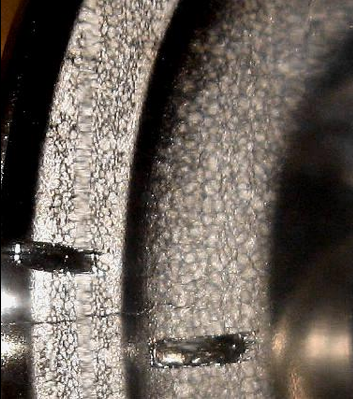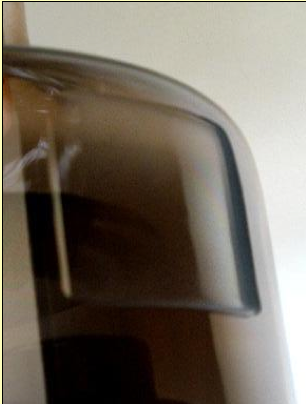Siemens Biangulix tube
Ref. K11




The pictures of this tube show the typical structure of a rotating anode oil-immersed tube, with the filament structure to the right in the upper picture opposing the rotating tungsten anode disc to the left. Although this yube dates to the seventies, the Biangulix was initially patented in 1957.
Although its two filaments are still good, this tube is out of use due to a problem in the ball-bearings of the rotating anode, stopping the rotation, which explains the deep erosions, almost cuts, on the tracks of both the large and the small focus. Moreover this tube has been long used, judging from the crackling of the X-ray emitting tracks of the rotating disc, better seen on the large-focus track.
The worn specifications label reads : 125 Max kV, Small focus output 30 kW, Large focus output 50 kW, inherent glass filtration (at the X-ray window) equivalent to 0.7mm Aluminum. As to the size of the focal spots I remember they measured 2 and 1.2 square millimeters respectively for the large and small focal spots.
Discover another Biangulix tube.